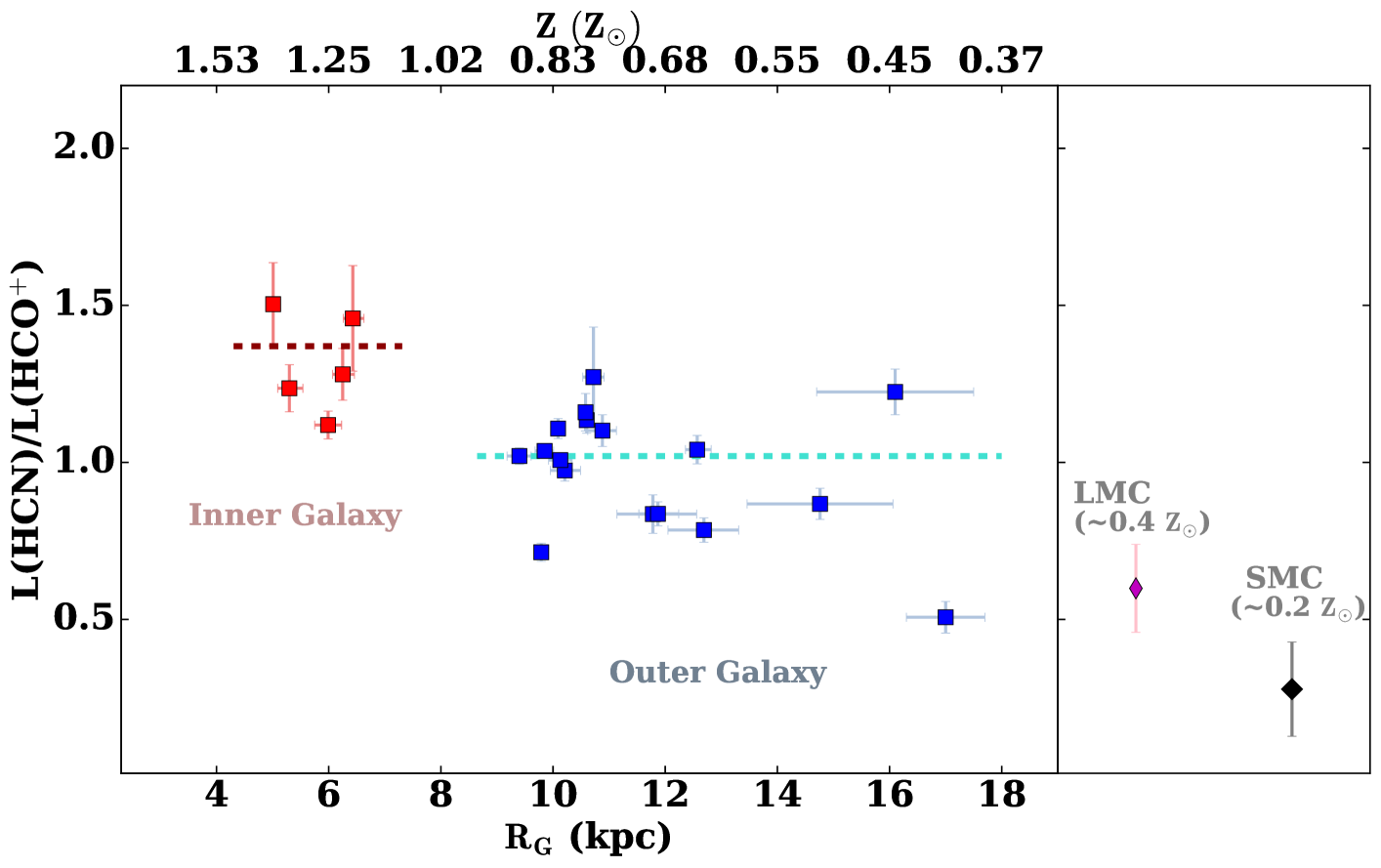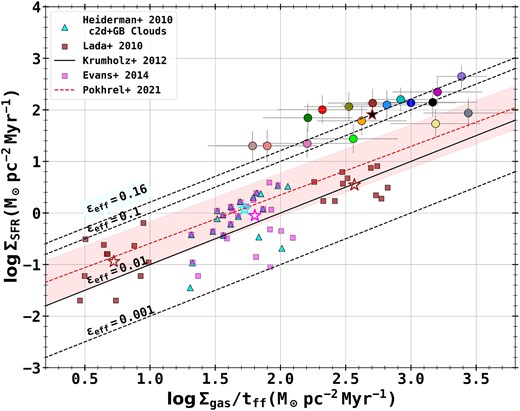Welcome
I am a faculty member at the Physical Research Laboratory (PRL), where my research addresses fundamental questions in astrophysics, including how and where stars and stellar clusters form in the Universe, and how newly formed stars interact with their surrounding interstellar medium to regulate star formation at the scale of their host molecular cloud. I investigate these problems through multiwavelength astronomical observations using both ground- and space-based facilities. In particular, I employ radio, millimeter, infrared, and optical observations to study the physical properties of stars, as well as the gas and dust associated with their formation environments. Further details of my research can be found on my research page, and a complete list of my publications is available on my publications page.
Recent Results

|
Variation of Dense Gas Mass-Luminosity conversion factor with metallicity in the Milky Way
In a recent study, we investigated the effect of metallicity on the mass-luminosity conversion factor derived from HCN and HCO+, which are commonly used tracers of dense gas. Our analysis revealed substantial variation in the abundance ratio of these tracers with metallicity, as well as across the galactocentric radius. We discuss the implications of these results in gas mass estimation and its potential role in explaining the observed low star formation efficiency in the central molecular zone of our Galaxy. For details see Patra et al. 2024, arXiv:2503.07931 Posted March 19th, 2025 |

